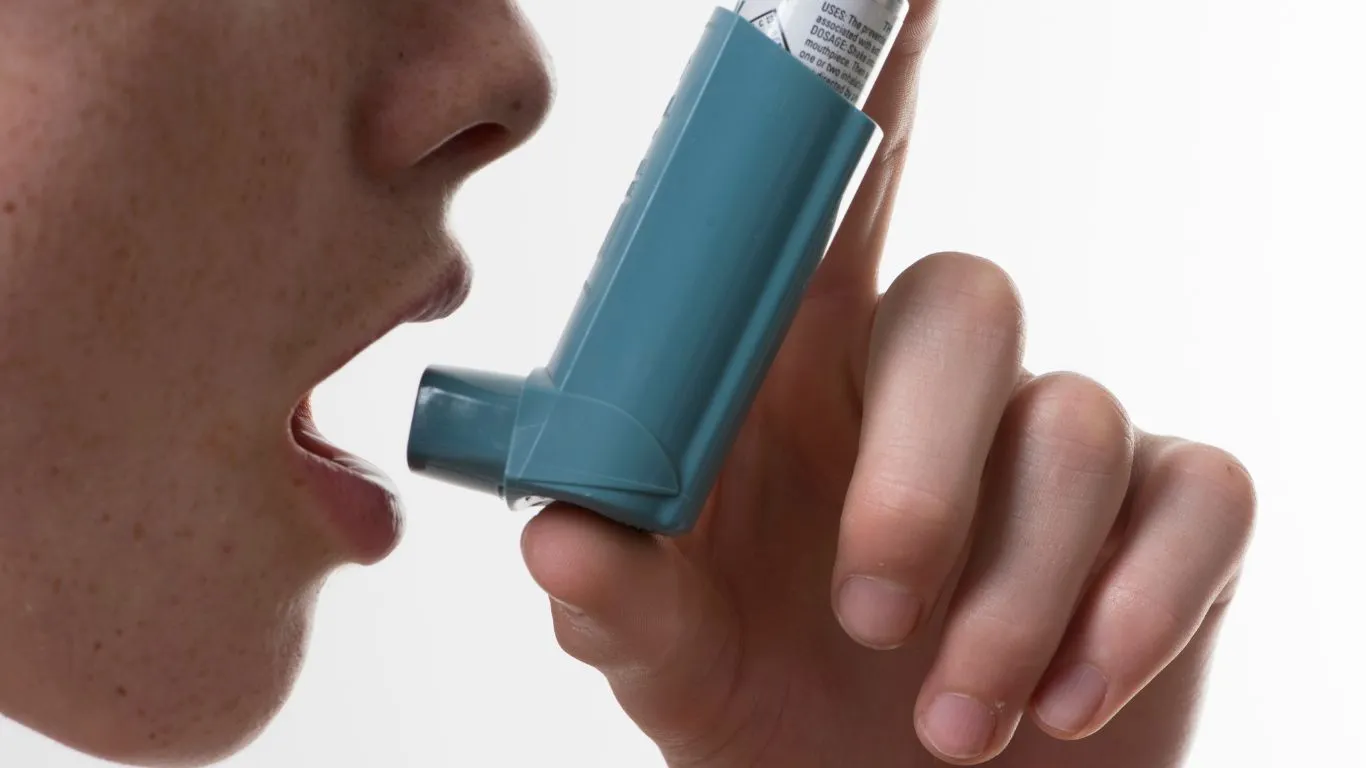Master the Best Daily Habits for Asthma Control and Breathe Freely
Living with asthma can often feel like a constant balancing act. As a Pulmonary Nurse, I’ve seen first-hand how effective daily habits can make a huge difference in asthma control, giving patients more freedom and stability in their everyday lives. Whether you’re managing mild symptoms or dealing with more severe asthma, there are daily routines and practices that can help you breathe easier. In this post, we’ll explore the best daily habits for asthma control that you can incorporate into your life right now to experience immediate benefits.
Understanding Asthma: The Importance of Consistent Management
Asthma is a chronic condition that affects the airways in your lungs, causing them to become inflamed and narrowed, which makes it difficult to breathe. But here’s the thing — asthma doesn’t have to control your life. With the right strategies and daily habits, you can manage your symptoms effectively and prevent asthma attacks. I’ve worked with so many individuals who have learned to live well with asthma, and it all starts with understanding how daily habits contribute to long-term control.
Why Routine Matters for Asthma Control
Consistency is key when it comes to asthma management. While your doctor may prescribe medication, your daily habits play a crucial role in how well you control your symptoms. Taking your medications on time, avoiding triggers, and staying on top of your asthma plan can prevent flare-ups and improve your overall lung function. It’s not just about the medicine — it’s about a comprehensive approach that becomes part of your daily routine.

The Best Daily Habits for Asthma Control
Now, let’s dive into the daily habits that can help you stay in control of your asthma. These are practical steps based on my experience as a nurse, and they can truly make a world of difference when practiced consistently.
1. Take Your Medication as Prescribed
One of the most important daily habits for asthma control is making sure you take your medication as prescribed. I can’t stress enough how vital this is. Many asthma patients find it easy to forget their daily inhalers or medications, especially when they’re feeling fine. But skipping doses can increase the risk of an asthma attack. Even if you’re not experiencing symptoms, sticking to your prescribed regimen helps keep inflammation under control and prevents flare-ups.
Tip: Set a daily reminder on your phone or create a medication chart to help you remember. A consistent routine can make a huge difference in how well your asthma is managed.
2. Monitor Your Asthma with Peak Flow Meter
Another excellent habit is using a peak flow meter to track your lung function regularly. This simple device can tell you how well air is flowing through your lungs, giving you a warning sign before your symptoms worsen. By monitoring your peak flow, you can catch changes in your asthma early and take action before an attack happens. It’s something I encourage my patients to do, especially if you have moderate to severe asthma.
Tip: Record your peak flow readings daily and share them with your doctor. This data can help them adjust your treatment plan as needed.

3. Stay Active, But Listen to Your Body
Exercise is another important habit for asthma control. Regular physical activity can strengthen your lungs and improve overall respiratory health. However, it’s crucial to approach exercise with caution. Some people with asthma may experience exercise-induced bronchoconstriction (a narrowing of the airways triggered by physical activity). If you fall into this category, don’t worry — you can still stay active! Just make sure to warm up before exercising and avoid strenuous activities when your asthma is acting up.
Tip: Choose activities that you enjoy and are less likely to trigger asthma symptoms, such as swimming or walking. And always have your inhaler handy during exercise, just in case!
4. Avoid Common Triggers
Asthma triggers vary from person to person, but common culprits include allergens (like dust, pollen, and pet dander), cigarette smoke, cold air, and strong odors. Being mindful of these triggers and actively avoiding them can help you maintain better control over your asthma. For instance, if you know pollen levels are high, try to stay indoors or wear a mask if you have to be outside. Keeping your home clean and using air purifiers can help reduce allergens, too.
Tip: Keep track of your triggers and try to limit exposure. If you’re unsure about what might be triggering your asthma, keep a journal to identify patterns.

Building a Routine That Works for You
Remember, the best daily habits for asthma control aren’t one-size-fits-all. What works for one person might not be as effective for another, and that’s perfectly fine. The key is to build a routine that fits your lifestyle and needs. Start with a few small changes and see how they impact your asthma symptoms. Over time, these simple habits can become second nature, making asthma management easier and more effective.
In the next section, we’ll dive deeper into some lifestyle changes that can complement these habits for even better asthma control. Stay tuned!
Healthy Lifestyle Changes That Boost Asthma Control
Building strong daily habits is the foundation, but making a few healthy lifestyle changes can take your asthma control to the next level. Through my years working as a Pulmonary Nurse, I’ve seen that patients who combine good habits with mindful living often experience fewer symptoms and a much better quality of life. Trust me, these tweaks aren’t hard, and over time, they can make you feel like a new person — breathing easier and living fuller.

Focus on a Balanced Diet
What you eat really does matter when it comes to managing asthma. Foods rich in antioxidants, vitamins, and minerals can support lung health and reduce inflammation. I always tell my patients that your plate can be just as powerful as your prescription!
- Fruits and Vegetables: Go colorful. The more variety, the better! Berries, spinach, sweet potatoes — they’re packed with nutrients that your lungs love.
- Omega-3 Fatty Acids: Found in fish like salmon, flaxseeds, and walnuts. These healthy fats can reduce airway inflammation.
- Avoid Highly Processed Foods: They often contain additives and preservatives that could potentially trigger asthma symptoms in sensitive individuals.
Tip: Try meal prepping! A little planning goes a long way when it comes to maintaining a healthy diet, especially during those busy weeks.
Stay Hydrated
This may sound super simple, but drinking enough water daily is a game-changer. Hydration helps thin mucus in the airways, making it easier to breathe. I usually recommend aiming for around eight glasses a day, more if you’re active or it’s hot outside.
Personally, I keep a reusable water bottle on me at all times — it’s such a small move but makes a huge impact on lung health over time.
Maintain a Healthy Weight
Weight management plays a surprisingly large role in asthma control. Excess weight can press on the lungs and diaphragm, making it harder to breathe and worsening symptoms. Plus, it can increase inflammation throughout the body, not exactly what you want when you’re trying to manage asthma!
In my clinical experience, even modest weight loss can lead to noticeable improvements in asthma symptoms. It’s all about progress, not perfection.
Environmental Control: Keeping Your Air Clean
Your environment — especially the air you breathe — can either support or sabotage your asthma control efforts. Taking a few proactive steps can seriously reduce the number of asthma triggers around you. Here’s what I often recommend based on real-life success stories from my patients.

Use Air Purifiers and Filters
Investing in a good air purifier can be a real game-changer, especially if you have indoor allergies on top of asthma. HEPA filters are best because they trap small particles like dust mites, pet dander, and pollen.
Tip: Change HVAC filters regularly — at least every three months — to keep your indoor air clean and asthma-friendly.
Keep Your Home Clean and Dust-Free
Sounds like a chore (because it is), but trust me, keeping dust and mold at bay can seriously help you breathe easier. Simple actions like vacuuming weekly (with a vacuum that has a HEPA filter), washing bedding in hot water, and wiping down surfaces can make a big difference. I usually suggest choosing unscented cleaning products too, because strong chemical smells can sometimes be triggers themselves.
Control Indoor Humidity
Too much humidity can encourage the growth of mold and dust mites, both of which are major asthma triggers. Ideally, keep your indoor humidity between 30% and 50%.
Tip: A small, inexpensive hygrometer can help you keep an eye on humidity levels, and a good dehumidifier can bring things back into balance if needed.
Stress Management: Don’t Let Anxiety Tighten Your Chest
One thing that often gets overlooked when we talk about asthma management is stress. But in my experience, emotional health is directly tied to breathing health. Stress and anxiety can actually trigger or worsen asthma symptoms, leading to a vicious cycle that’s tough to break if you’re not careful.

Practice Relaxation Techniques
Relaxation isn’t just good for your mind — it’s good for your lungs too! Deep breathing exercises, meditation, and even simple activities like knitting or gardening can help lower your overall stress levels.
I personally love guided meditation apps — they’re a simple way to build a mindfulness habit even if you’re crazy busy. Just 5 minutes a day can do wonders!
Stay Connected with Support Systems
Don’t try to manage everything on your own. Having a support network — whether that’s family, friends, or even online communities — can make you feel less isolated and overwhelmed. Many of my patients tell me they feel more empowered and relaxed just knowing someone is in their corner.
Consider Professional Help if Needed
If you’re dealing with chronic stress, anxiety, or depression, don’t hesitate to talk to a mental health professional. There’s no shame in seeking help. In fact, managing mental health is just as important as managing physical health when it comes to asthma control.
Alright, now that we’ve tackled lifestyle upgrades and environmental changes, the next step is fine-tuning your asthma action plan and recognizing early warning signs before they become bigger issues. Stick around because this next part could be the key to transforming your daily asthma experience.
Fine-Tuning Your Asthma Action Plan
So now that you’ve got the daily habits, lifestyle changes, and environmental control down, it’s time to level up even further with a personalized asthma action plan. If there’s one thing I emphasize to my patients, it’s that having a solid plan can make all the difference between managing asthma calmly and scrambling during a flare-up. A little preparation today saves you a lot of panic later — and honestly, it just gives you a huge sense of control.

What is an Asthma Action Plan?
Simply put, an asthma action plan is a written document created with your healthcare provider that outlines exactly what steps to take depending on how you’re feeling. Think of it like a personalized roadmap for your breathing health — clear, simple, and made just for you.
Typically, it’s divided into zones:
- Green Zone: You’re doing great. No symptoms, or very mild ones. Just keep following your regular daily habits for asthma control.
- Yellow Zone: Warning lights are flashing! Symptoms are getting worse — coughing, wheezing, or shortness of breath. Time to adjust your medications according to the plan.
- Red Zone: Emergency. Severe symptoms that need immediate action and possibly a trip to the ER.
Tip: Always keep a copy of your plan where you can easily grab it — your purse, fridge, or saved on your phone. I’ve seen it make all the difference in high-stress situations.
Recognizing Early Warning Signs
One thing I can’t stress enough from my years working bedside: listen to your body. Asthma rarely “just happens” out of the blue — there are usually early signs that something’s brewing. Recognizing these signals early can mean the difference between a minor flare and a full-blown asthma attack.
- Increased coughing, especially at night
- Feeling unusually tired during exercise
- Shortness of breath even while resting
- Using your quick-relief inhaler more often
When you notice these signs, it’s time to shift gears according to your asthma action plan — don’t just “wait it out.” Early intervention saves a lot of trouble down the line, trust me.
Top Tech Tools to Help Manage Asthma Daily
Let’s be real — we live in a digital world, and tech can actually be an incredible ally in managing asthma. Some of my patients swear by using apps, smart inhalers, and even wearable tech to track and stay on top of their asthma symptoms.

Helpful Apps and Devices
- Asthma Apps: Apps like Propeller Health and AsthmaMD help track symptoms, medication use, and even provide environmental alerts.
- Smart Inhalers: These nifty devices attach to your inhaler and track when and how often you use it. Some even send data directly to your doctor!
- Fitness Trackers: Monitoring your daily activity, heart rate, and oxygen levels can give you clues about how your lungs are doing.
Tip: Always double-check any app or device with your healthcare provider to make sure it fits your personal asthma management plan.
Telemedicine: Easy Access to Care
Another modern bonus? Virtual appointments. I can’t tell you how many patients have benefited from quick video check-ins with their pulmonologists, especially when things start to feel a little “off.” Telemedicine is here to stay, and for asthma patients, it’s such a game-changer. Less travel, faster care — win-win.
Small Daily Wins Add Up to Big Breathing Victories
Managing asthma really isn’t about huge overnight changes. It’s about the small, consistent daily wins — taking your meds, avoiding your triggers, exercising wisely, eating right, staying connected with your healthcare team. Each little step stacks up to a stronger, healthier you.
And honestly? You deserve to breathe easy. I’ve watched countless people transform their lives by committing to the best daily habits for asthma control. You absolutely can too — one day, one breath at a time.
References
Disclaimer
This article is intended for informational purposes only and does not replace professional medical advice. Always consult your healthcare provider before making any changes to your asthma management plan or treatment routine.

Bianca Nala is a compassionate Nurse Practitioner with a strong background in primary and respiratory care. As a health writer for Healthusias.com, she combines her clinical expertise with a talent for clear, relatable storytelling to help readers better understand their health. Bianca focuses on topics like asthma, COPD, chronic cough, and overall lung health, aiming to simplify complex medical topics without losing accuracy. Whether she’s treating patients or writing articles, Bianca is driven by a single goal: making quality healthcare knowledge accessible to everyone.






